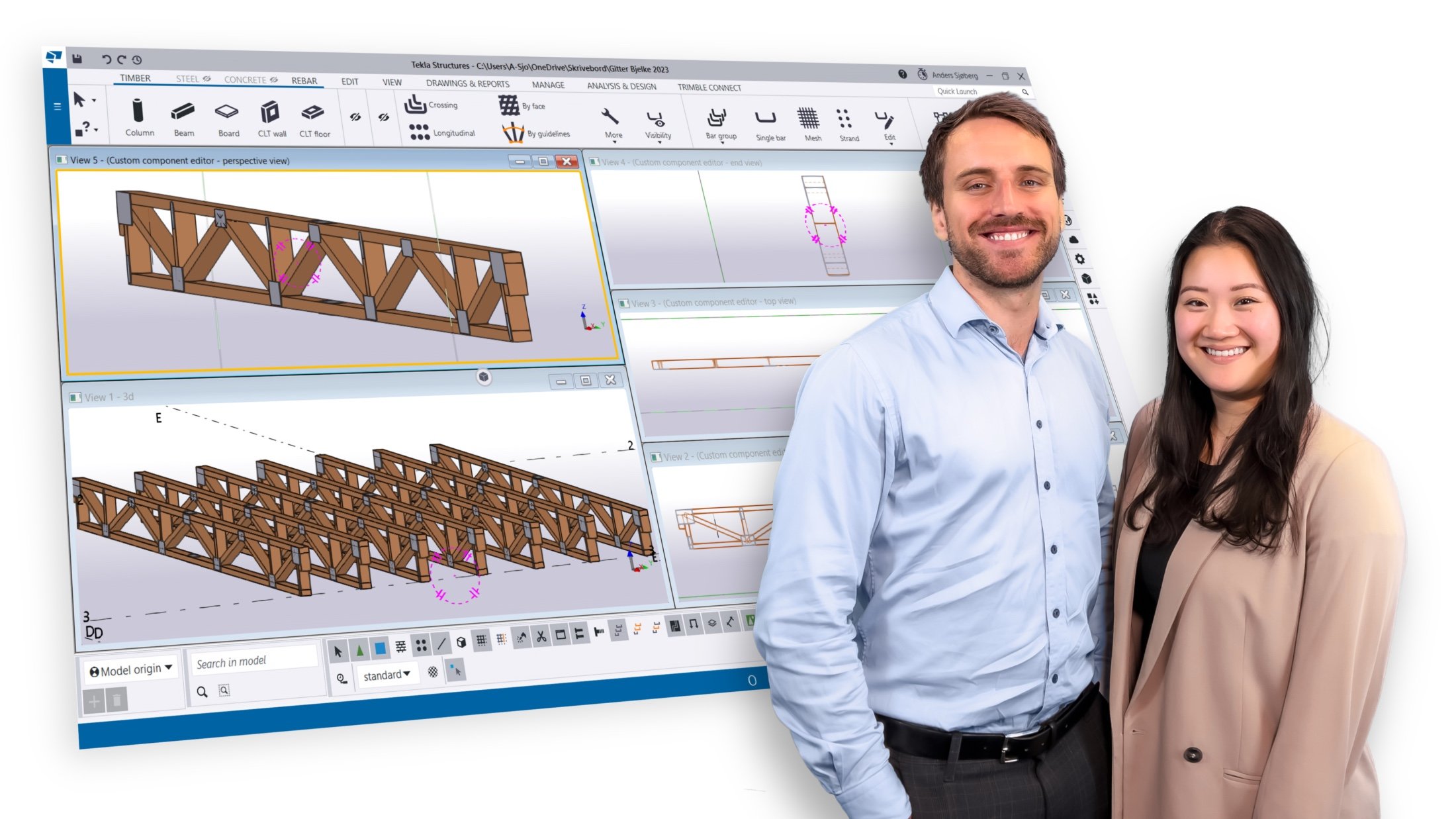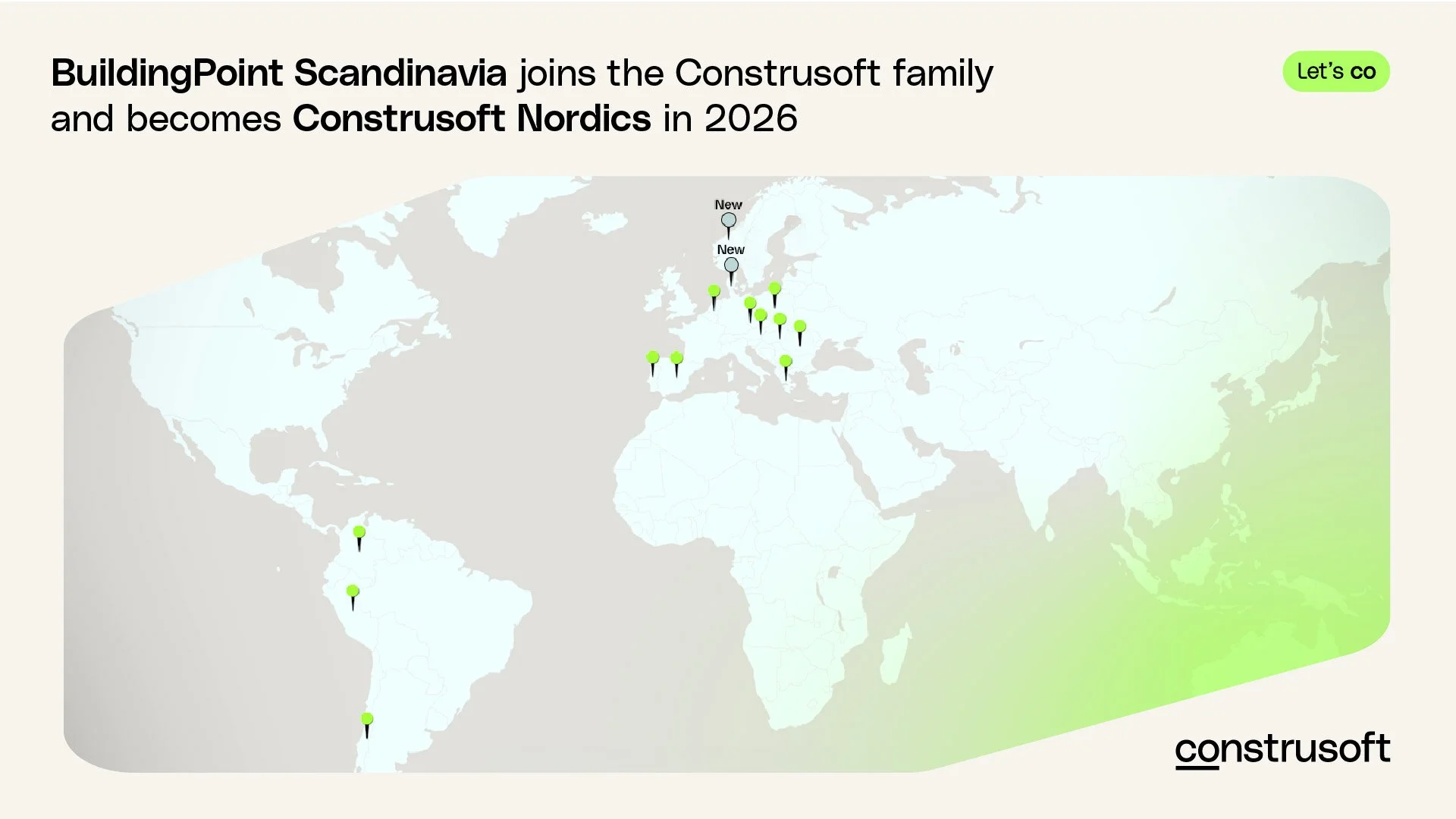Summer interns takes on timber in Tekla!
PICTURE: BuildingPoint Scandinavia summer interns Hannah Rønneberg and Anders Sjøberg.
Summer means vacation for many of us. But we can’t leave the office empty, so we’ve hired Hannah and Anders to keep it busy! They will focus an important topic: Improving the BIM workflow in Tekla for TIMBER structures!
Timber structures
Cross laminated timber and glued laminated timber in load-bearing constructions open up many new and exciting solutions and architectural expressions, and the technical possibilities are developing at great speed. Industrial production and industrial construction in wood provide competitive advantages like never before.
Timber is very climate and environmentally friendly, and provides a sustainable construction method that takes the environment into account throughout the building's life cycle. It requires less energy for fabrication in many cases and that can result in low CO2 emissions compared to other materials such as steel and concrete.
REFERENCE PROJECT:
Bjergsted Financial Park - an innovative timber framed office building in Stavanger
Local winner of the Tekla BIM Awards 2020 in the Commercial category!
“
As summer students in BuildingPoint, we have been tasked with contributing to a more user-friendly and intuitive interface when it comes to modeling timber structures in Tekla.
- Hannah Rønneberg, summer intern, BuildingPoint Scandinavia
What is Cross Laminated Timber?
Cross laminated timber (CLT) is made up of cross-laid wooden elements that are joined with glue, screws or wooden dowels. The elements are prefabricated with openings for technical fittings, such as doors, windows and joints, so that the whole thing can be put together on the construction site.
There are several good reasons to choose cross laminated timber:
Cross laminated timber is a good climate and environmental choice, considering CO2, energy use, indoor environment and resource use.
It provides great flexibility in design, layout and construction.
The prefabricated cross laminated timber elements can significantly reduce construction time, which in turn reduces costs and, not least, minimizes waste on the construction site.
It is easy to combine with other materials. Wooden materials go well (visually and constructively) with other materials such as concrete and glass, and the combination possibilities are great.
The material has a low weight, which can provide advantages for foundations or superstructures, and solid wood provides easy installation of technical installations.
The working environment on the construction site will be significantly improved with less concrete dust and air pollution.
IMAGE (CLICK to see large image): Tekla Structures with the Timber tab opened. The picture shows a model of robust wooden trusses that support versatile wooden hollow slabs. These lightweight, cost-effective, and adaptable slabs are complemented by the trusses, providing optimal strength and stability
The student project
The project involves adapting Tekla to use for timber!
Tekla has a reputation as a fantastic tool for steel and cast-in-place concrete and concrete elements, but people in the timber industry aren’t aware that many of the basic functions that are needed for using Tekla in timber projects are in place already! The reason for that may be that the menus in the user interface appears to be related to steel or concrete and that creates a threshold to get started.
The summer project will address this and other things to make Tekla a great tool also for timber!
“
We will contribute with report structures, material catalogs and components such as hole cover elements made of timber. The idea is that it should feel simple and clear to carry out planning with a view to the future and the green shift when using Tekla.
- Anders Sjøberg, summer intern, BuildingPoint Scandinavia












